
If you're new to cooking, choosing a sharp kitchen knife can be daunting. With so many types of knives on the market, knowing which ones you need and how to use them correctly can be overwhelming. Understanding the basics of kitchen knives can make all the difference to your cooking game. This beginners guide to kitchen knives is designed to provide a comprehensive overview of the most common knife types, their uses, and how to choose the right one for your needs. So grab a cutting board, sharpen your blade, and dive in!
Selecting the Right Knife
When selecting a knife, it's essential to consider the size, weight, and balance. A knife that feels too heavy or too light may be uncomfortable after extended periods. Choose a blade that will remain sharp and durable, retaining its edge over time.
Blade Materials
Knife blades are commonly made from stainless steel, carbon steel, or a combination of both. Stainless steel blades may be more resistant to rust and corrosion, but carbon steel remains sharper for longer and is easier to sharpen. Ultimately, the material you choose is a matter of personal preference.
Caring for Your Knives
Give your knives the proper care and maintenance to extend their lifespan and ensure their continued sharpness. After using, wash your knives by hand and dry them thoroughly with a soft cloth. Do not put your knives in the dishwasher or leave them soaking in water, as this may cause rust and damage to the blade.
Sharpening Your Knives
To maintain the sharpness of your knives, it's essential to sharpen them regularly. There are several methods for sharpening knives, including using a sharpening stone, honing steel, or an electric knife sharpener. A sharpening stone is the most traditional method and involves running the blade along the stone at the appropriate angle.
The Most Popular Knives
There are many different kitchen knives, each with their specific purpose. The most common kitchen knives are the steak knife, bread knife, carving knife, paring knife, santoku knife, boning knife, chef knife, and bread knife. The below guide explores each of these knife types in more detail.
Steak Knives
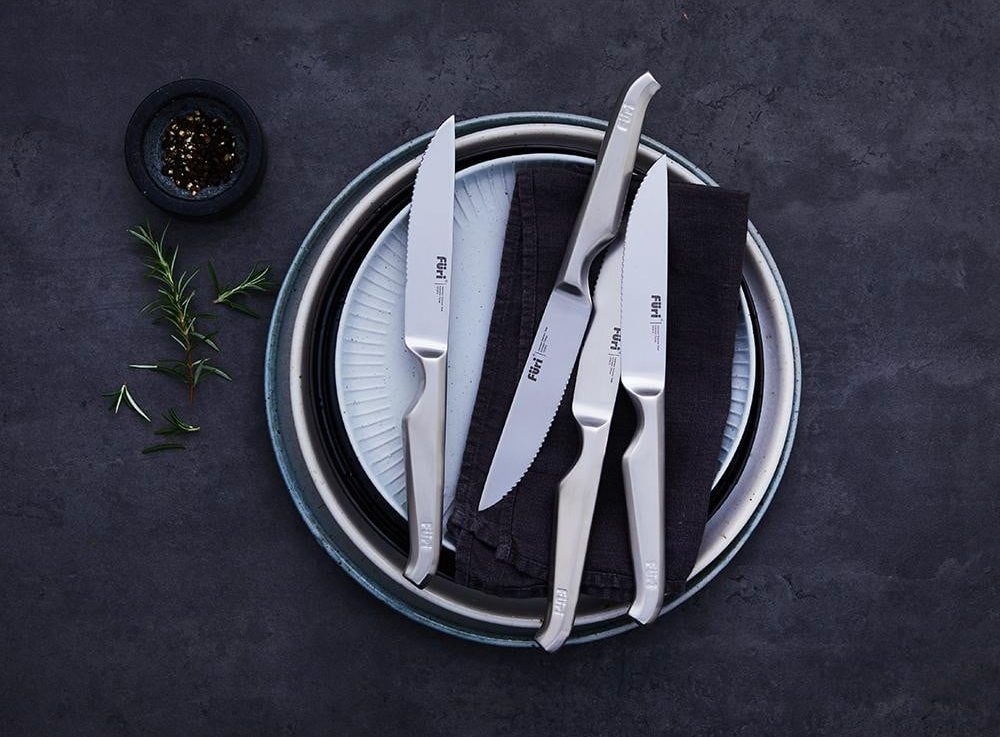
Steak knives are typically designed with sharp, serrated edges that easily cut through cooked meats such as steak or roast beef, ensuring a smooth and effortless dining experience. Steak knives come in various shapes and sizes, from the classic straight-edged design to the more modern and angular styles. When purchasing steak knives, grip is important. Look for a steak knife that feels good in your hand and is easy to control.
Bread Knives
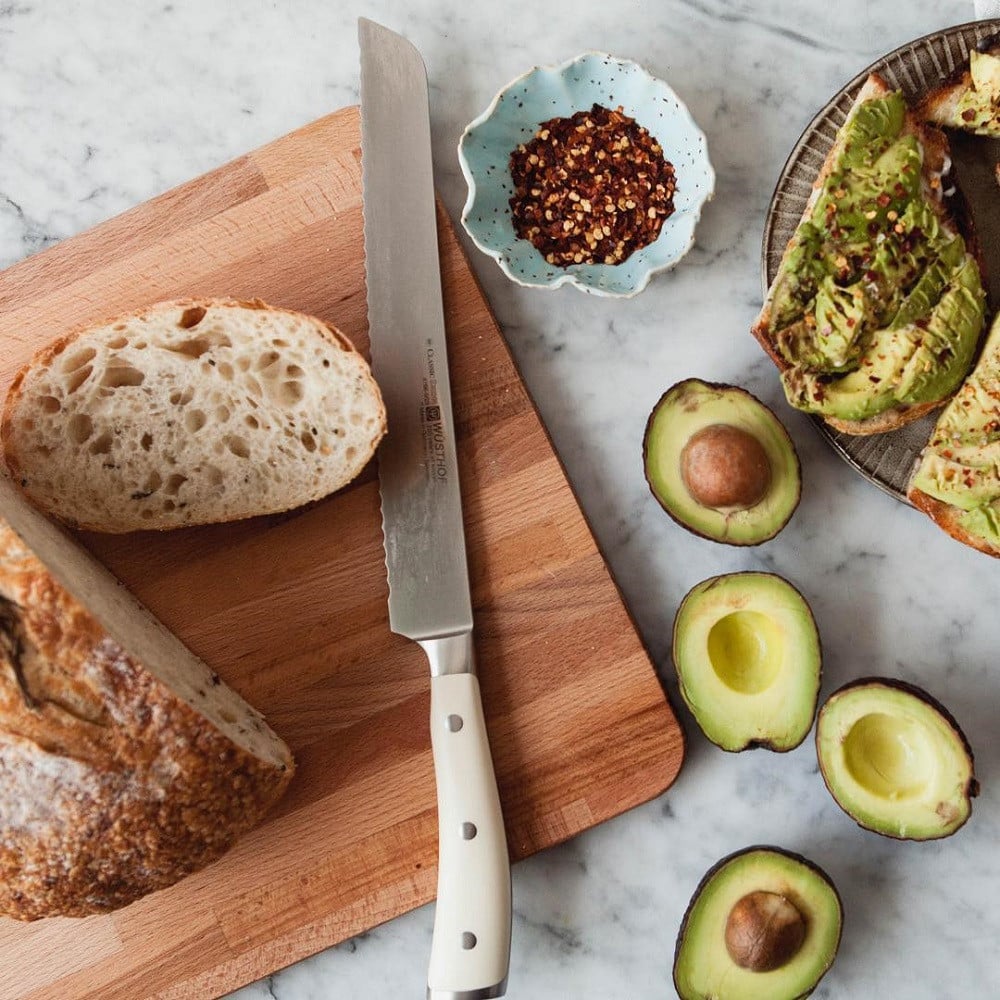
Bread knives are long, serrated knives, designed to slice thick bread crusts without tearing or crushing it. Designed with blades ranging from 18 to 30cm in length, the serrated edge helps to grip the bread as you cut, making it easy to get nice, even slices. Bread knives typically have a pointed tip, which can also be useful for piercing the crust of a loaf of bread or cutting through tough skin (like on a tomato) without squishing or deforming them.
Carving Knives
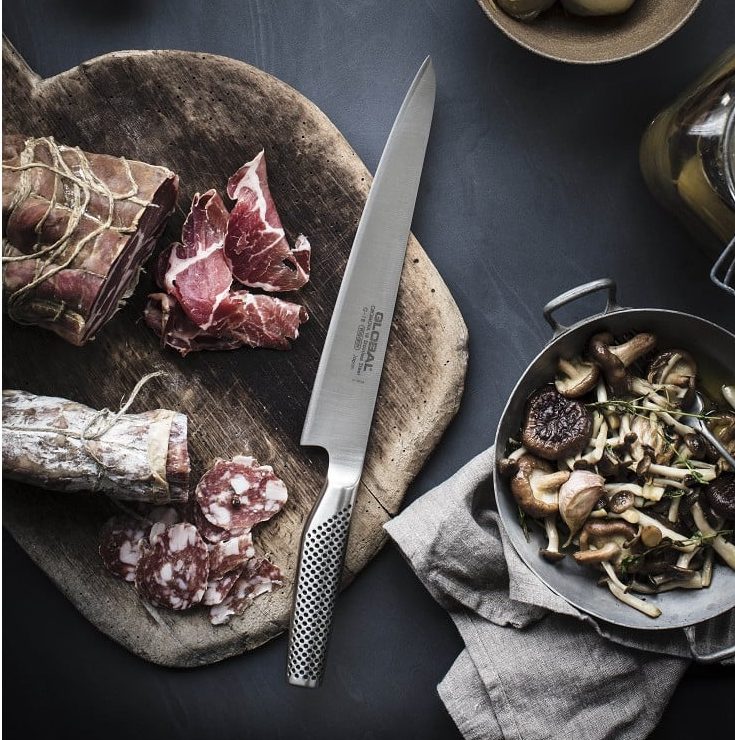
Sometimes called slicing knives, carving knives are long, thin knives used for carving cooked meat. These knives have a sharp point and a straight edge, usually between 20 and 30cm long. Carving knives are designed with thinner blades than other knives, making them perfect for cutting thin slices of meat without tearing it.
Paring Knives

Paring knives are small, versatile knives that typically range from 5 - 10cm, perfect for tasks including peeling and slicing fruit to trimming vegetables. Paring knives are most commonly used for tasks that require a lot of precision, such as removing the seeds from a chilli pepper or slicing garlic cloves.
Santoku Knives
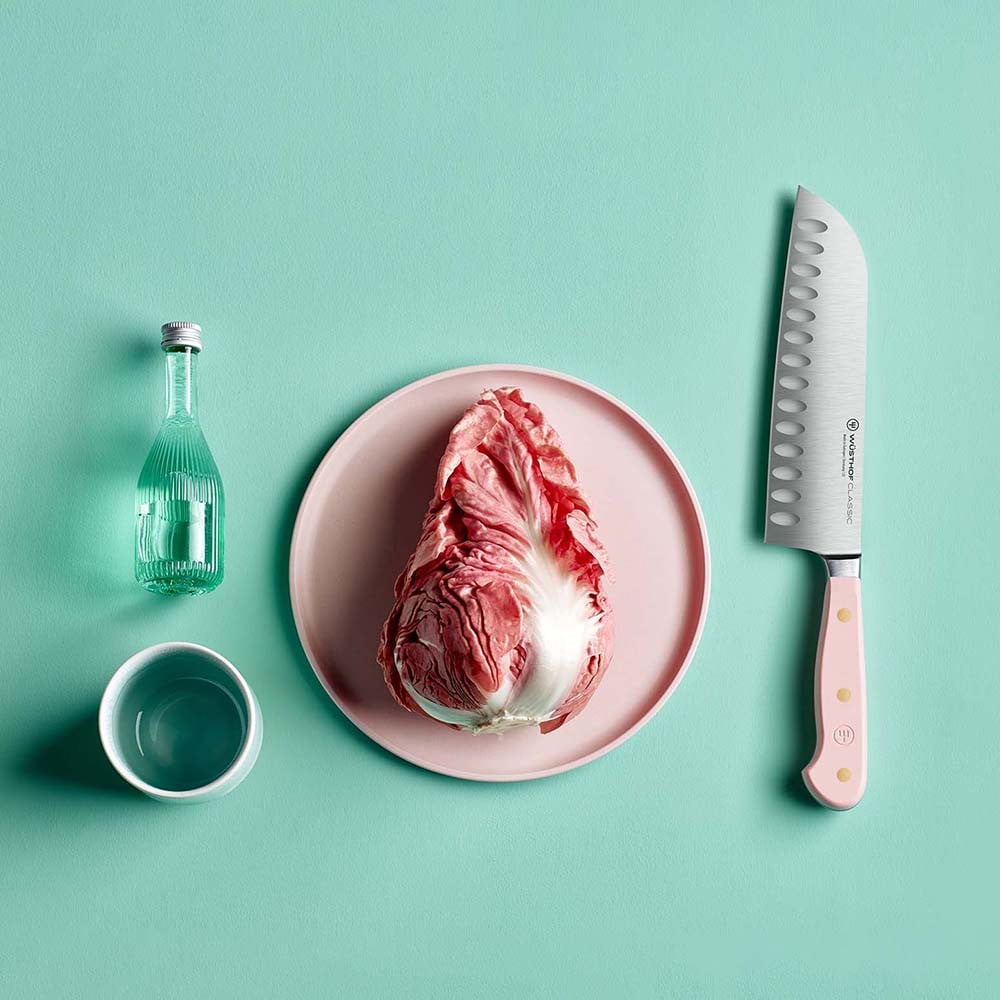
Santoku knives are multi-purpose Japanese-style knives that can be used for slicing, dicing, and mincing all kinds of ingredients, including vegetables, fish, and meat. If you're a novice chef, a Santoku knife is a great option. When choosing a Santoku knife, pick one that feels comfortable in your hand as you may find you use this knife for multiple cooking tasks.
Boning Knives

Boning knives are designed for delicate and fiddly tasks such as removing bones from meat without damaging the surrounding flesh. They have a sharp, narrow thin and flexible blade, allowing for precision and control when working with meat. These knives are easy to maneuver around bones and joints, an essential tool for butchers, fishmongers, and home cooks alike.
Chefs Knives

Chefs knives are the most versatile and essential tool in the kitchen, perfect for everything from slicing, dicing, and chopping vegetables to meat. These knives typically have a wide blade with a curved edge, making it easy to rock the blade back and forth for efficient cutting. Available in different lengths from 15.2cm to 30.5cm, the longer the blade, the more versatile it is. We recommend getting a chef's knife with a 20cm blade if you're just starting out to give you plenty of length to work with but still manageable and not too large or unwieldy.
Butchers knives
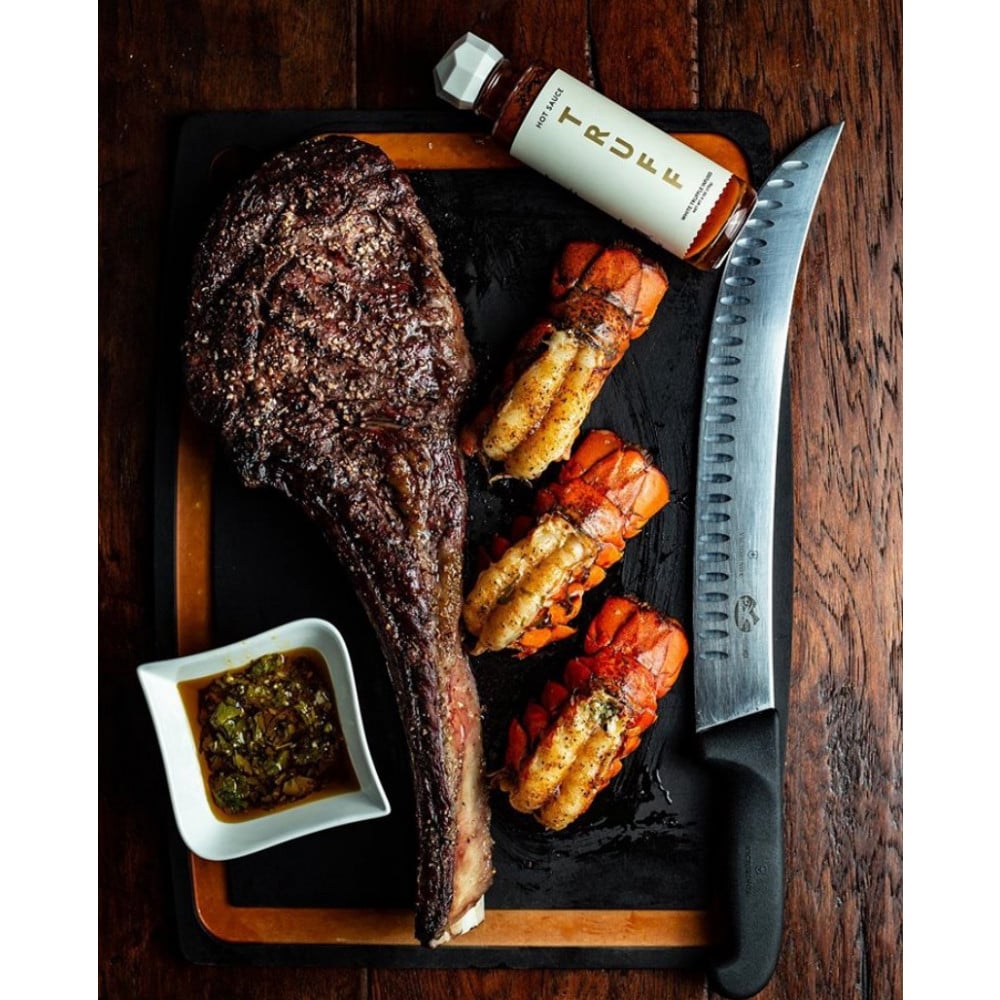
A general-purpose butcher knife is a versatile kitchen tool, great for cutting, trimming, and preparing meat. Butchers knives typically have a wide blade with a slightly curved edge, making it easy to slice through tough meat and connective tissue. The blade is also thick and heavy, allowing it to handle more rugged tasks like breaking down large cuts of meat.
Nakiri Knives
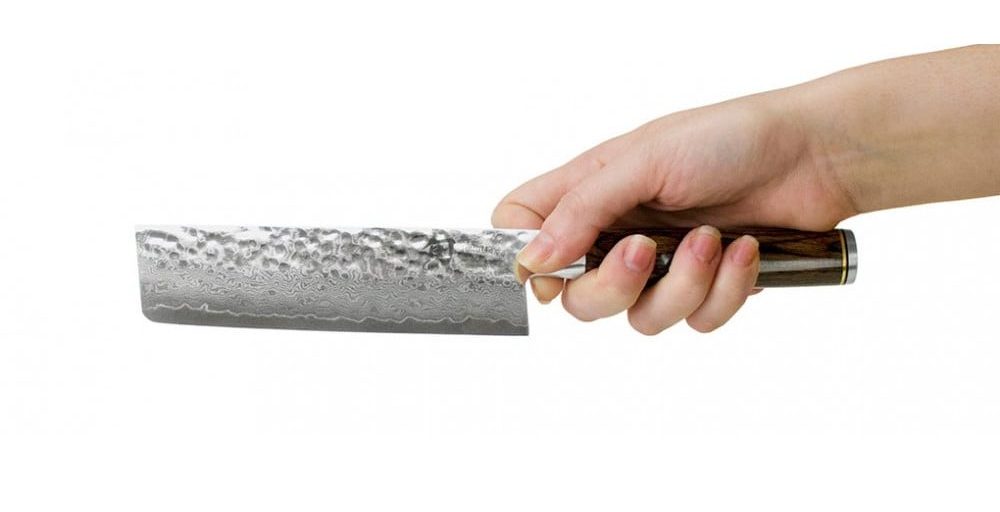
Nakiri knives are Japanese-style knives commonly used for chopping vegetables. They feature a rectangular-shaped blade with a straight edge, which makes it easy to slice through vegetables with precision and efficiency. The blade is typically made from high-carbon steel, which provides excellent sharpness and edge retention. When choosing a Nakiri knife, look for a well-balanced knife with a comfortable handle that provides a secure grip.
Next Read: 8 Universal Knife Block Sets That Will Last You a Lifetime
